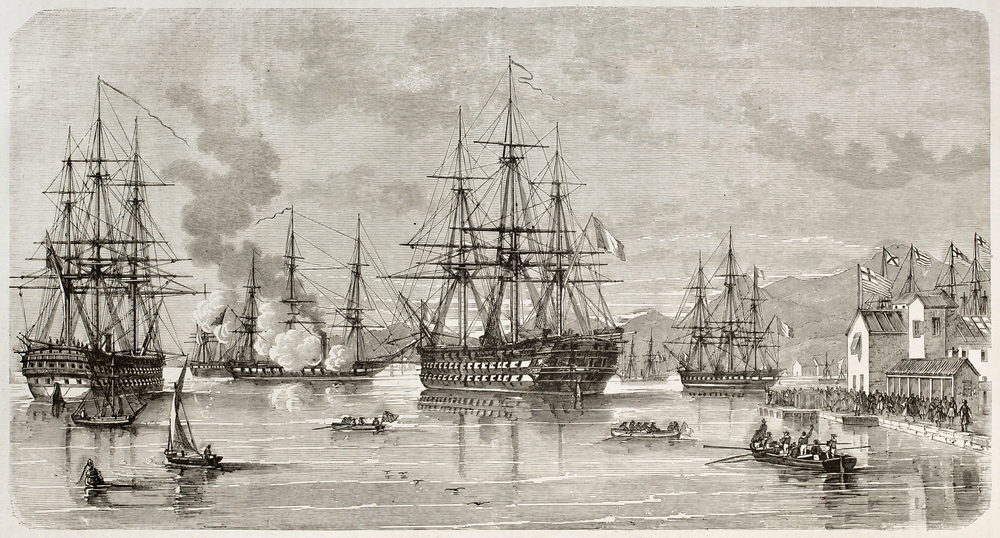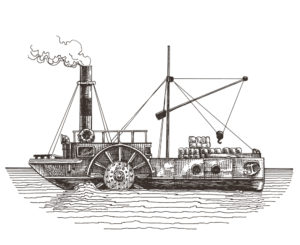
Part 3: Agricultural Productivity and Standards of Living
[Editor’s note: Read Part 1 and Part 2.]
There was a time not too long ago when most people understood that comparative advantage, trade, the division of labor and specialization delivered greater agricultural productivity and standards of living. Perhaps because they or members of their extended family weren’t all that removed from quasi-subsistence farming, they saw the virtues of specializing in the production of “cash crops” for which there were lucrative and often distant urban markets. By participating in a larger division of labor in which they concentrated on what their land was best suited for, commercial farmers achieved a much higher standard of living for themselves and others.
A well-documented historical case in the transition from subsistence to exchange is ancient Athens and its back country of Attica. Although a large plain in the context of Greece’s overall topography, like much of the Greek mainland Attica has relatively poor soils and highly variable annual rainfalls. Before the explosive growth of Athens over two and a half millennia ago, local farmers grew mostly a variety of grains and some vegetables with the help of hand tools, although in the better areas larger fields were worked with ass or ox-drawn ploughs. Low and erratic precipitations resulted in a rather high probability of crop failures, perhaps as much as one year out of four for wheat and one out of twenty for barley. Despite these odds, grain cultivation was typically the most sensible option because of its nutritional value and ease of production and storage.
Fortunately, Athenians had ready access to sea travel. As they progressively integrated into regional trading networks, they finished clearing up marginal lands in their backcountry to obtain trees for firewood and to build and manufacture houses, ships and other implements and items of commerce. Meanwhile, in various locations around the Mediterranean and the Black Sea, Greek colonists and local populations developed large-scale productions of cereal grains (especially the more lucrative soft bread wheat) and other foodstuffs for the specific purpose of supplying Athens and other urban markets. In time, non-local producers supplied at least half of Athens requirements, especially as its residents became fond of wheaten bread. To distant suppliers, Athens was a prime market because it was the largest, wealthiest and most stable Greek city at the time. It offered foreign traders good port facilities, safe passage, a valuable return cargo (from manufactured goods to silver) and at some point in time special courts devoted to maritime commerce.
In light of the abundance and affordability of foreign wheat shipments, Attica producers focused their efforts on growing barley and replanted some lands formerly devoted to grain production with vineyards and olive and fig orchards. There is, however, some controversy as to how much intensive local farming that included crop rotations with legumes and the raising of livestock took place. Be that as it may, Athenians might have become net food importers as early as the sixth century BC and were certainly regular and substantial grain importers in the following centuries.
Needless to say, food markets during this time period were never completely free. To summarize, the exportation of local grain from Athens was prohibited at all time and punishable by death. Officially sanctioned grain buyers were authorized to raise public subscriptions and use private money to secure foreign supplies. Commanders of Athenian ships leaving a foreign port were compelled to carry grain as ballast and to leave two-thirds of their grain cargo in Athens (the rest could be sold or re-exported at their discretion). Despite these bureaucratic impediments and the somewhat primitive nature of the transportation and preservation technologies of the time, Athens’ food supply proved generally sufficient, except in times of war. There is also no question it was more diversified and affordable than in previous centuries or would have been in the absence of long-distance trade.
As could be expected, much evidence suggests that throughout history urban dwellers everywhere acquired as much cheaper or more exotic foodstuff produced in more distant locations as was practical and politically feasible. For instance, The Thousand and One Nights list some of the items available to wealthy Baghdad consumers, from wine, olives, dry fruits and meats of all kinds to Syrian apples, Othmanee quinces, peaches of Oman, cucumbers of the Nile, Egyptian limes and Sultanee citron. In his A tour thro’ the Whole Island of Great Britain published in the mid-1720s, Daniel Defoe observed that “this whole kingdom, as well as the people, as the land, and even the sea, in every part of it, are employed to furnish something… to supply the city of London with provisions.” As a result, his country was the most “flourishing and opulent” in the world.
In most parts of the world, however, bad inland transportation infrastructure meant that significant local self-sufficiency was more the rule than the exception. Reflecting on his early nineteenth century youth in northeastern Ohio, the San Francisco Chronicle agricultural writer, editor and ardent anti-socialist Edward Francis Adams described a world where “transportation was slow and expensive, and the products of each district mostly consumed therein.” It was inhabited by “thrifty 100-acre farm” families made up mostly of “jacks of all trades” who exchanged surplus meat and butter with neighbors and nearby villagers. They brought their grain to the local mill and the leather of the cow killed for family consumption to the local tanner. They sold their extra eggs and maple syrup to the local store where they bought their few good pieces of clothing. The local boys “got their spending money by picking up nuts in the woods and from the sale of the fur of an occasional mink or muskrat.” The area specialists (millers, tanners, doctors, ministers and others) purchased a combination of locally produced and imported items at the local store while “the small surplus” of extra grain and barrels of pork which had been “accumulated painfully” by local farmers found “its way to the seaboard” in exchange for things locals couldn’t produce. In this context, the hard working local farmer “received very little money, and kept it almost no time at all.” There as elsewhere, trade was never entirely absent, but when it was insignificant, farmers had no capacity to accumulate savings and to invest in equipment and inputs.

Fortunately, the advent of the coal-powered steamship and railroad soon made long-distance trade and regional specialization more viable. Writing in the pages of The Popular Science Monthly in 1890, J. J. Menzies observed that “[e]xperience keeps constantly adding to our knowledge of the special advantages of each locality, and every free movement of trade and industry increases the sum of their usefulness to the human race. Scarcity of food can no longer exist among nations that have kept abreast of this economical revolution.” Menzies added that “[t]hose who doubt the advantages of this universal, world-wide intercourse and exchange are bound in consistency to advocate the reversion of society not merely to any earlier stage in its development, but to that state of things which preceded its initiation – that is, to pure and simple cannibalism; for an argument that is good against one step in this march of progress is equally good against another.”
In his high school textbook, economic geographer Charles Morris wrote in 1910 that “some parts of the earth are fitted to produce certain special thins and some to produce other things. None of us can produce all the things we need, unless our wants are very simple indeed.” For instance, the “cattle and sheep-raisers of the western plains must buy wheat for their bread from farmers. These, in turn, need to buy ploughs and harvesting machines from the manufacturers. The latter have to buy iron and wood from the miners and foresters. These need to buy meat from the cattle-raisers. Thus the circle of trade is complete.” Regional specialization at home was mirrored between countries. For instance, the varieties of American corn available at the time “will not ripen in the British Islands or Northern Europe, and much is sent there for cattle-food.” Much American wheat was also exported to Europe at the time, while, on the other hand, America got “great part of its sugar, and all of its coffee, tea and spices, from foreign lands.”
At about the same time the social reformer Frederic Clemson Howe could observe that the “desires of the city direct the life of the shepherds on the mountain-side, the fishermen in Alaska, the pearl-divers of India, the plantations of the tropics, the wheat-fields of America and Russia… the sheep and cattle ranges of Australia and Argentina [and] the wine-growers of France.”
A decade ago agricultural economists Jayson Lusk and F. Bailey Norwood felt compelled to restate these arguments on this website in light of the increased popularity of the local food movement. They argued that “local food is generally more expensive than non-local food of the same quality. If that were not so, there would be no need to exhort people to ‘buy local.’” But what about keeping the money in the local community instead of sending it to distant corporate headquarters? The economists pointed out that paying more for a comparable local item means that there is less money left in the pockets of consumers to purchase other things – “the very definition of wealth destruction.” But what about all the greenhouse gas emissions of long-distance transportation? Not so fast, for the “truth is that the energy expended transporting food is relatively unimportant” when you look at the whole life-cycle. Growing pineapples in energy guzzling greenhouses in North Dakota is possible, but importing them from locations where nature gives you the heat free of charge is preferable for both your wallet and the planet.
In the end, as one analyst put it, subsistence farming and regional quasi self-sufficiency always and everywhere delivered “low yields, low productivity and paltry incomes.” In other words, “stagnation – just enough to survive on, but never enough to improve one’s lot.” Alternative food system activists who believe the time to make excuses for agri-business is over and that we must radically change the way we do things should perhaps ponder a bit longer why countless people worked so long and so hard to develop our globalized food supply chain.
Pierre Desrochers is Associate Professor of Geography, University of Toronto Mississauga.

Comments are closed.